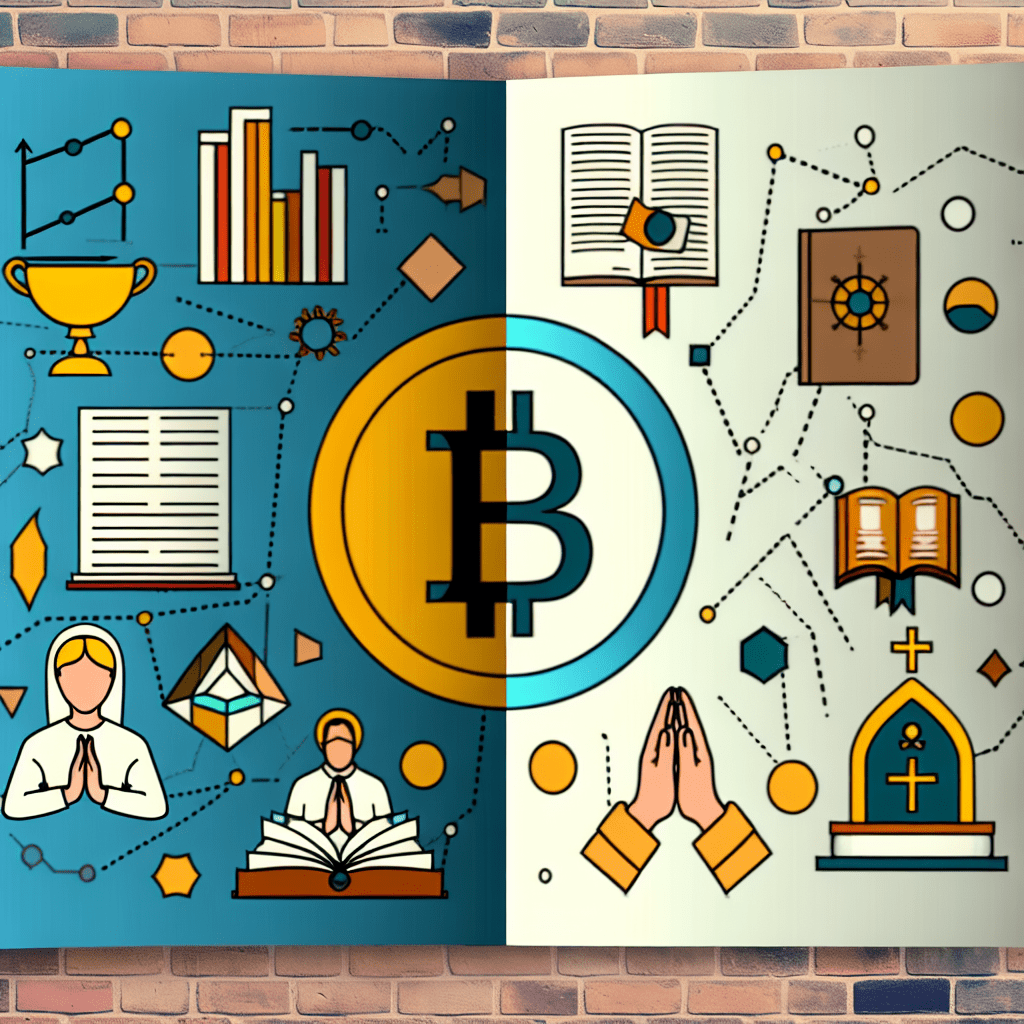
Summary
- Recent global surveys indicate an increase in Bitcoin ownership since 2024, with many investors depending on peer and family networks over financial understanding.
- In Muslim communities, the adoption of Bitcoin hinges on religious rulings regarding halal and haram, with growth occurring primarily when Shariah-compliant channels are established.
- Countries with a majority Catholic population utilize Bitcoin and stablecoins primarily for remittances, inflation protection, and everyday transactions, echoing a longstanding tradition of community-focused financial practices.
- Crypto adoption in Hindu and Buddhist societies often stems from cultural legacy, viewing Bitcoin as digital gold in India and employing it for small-scale business ventures in Vietnam, Thailand, and Japan.
Usage patterns across different cultures illustrate that religious values influence Bitcoin’s integration, while financial literacy tends to play a supporting role.
Influence of family and peer networks on Bitcoin adoption
Despite Bitcoin’s increasing visibility in everyday finance, many individuals still engage with it without a profound understanding of its intricacies.
In the U.S., a Gallup survey from July 2025 revealed that 14% of adults possess cryptocurrency. Awareness levels remain low, with 60% stating they have “heard of it but don’t know much,” and only 35% asserting they know “something” about it.
Similarly, regulated markets like the United Kingdom show comparable trends. The Financial Conduct Authority’s March 2025 consumer survey estimated that 12% of adults own crypto, illustrating how social networks influence crypto adoption.
32% of users reported first learning about cryptocurrencies from friends or family, while 20% said these connections influenced their purchase decisions. Those who conducted research often relied on informal sources rather than formal education.
The knowledge disparity is evident globally. An OECD study released in September 2025 evaluated adults in 39 countries, revealing an average digital financial literacy score of 53 out of 100, slightly increasing to 55 among OECD nations.
Only 29% of adults worldwide, and 34% within OECD countries, achieved the requisite 70-point threshold to be deemed financially literate in digital contexts.
Overall, the initial foray into Bitcoin (BTC) frequently happens through familial and social circles, suggesting that trust in the asset may be cultivated through inherited beliefs and values. This begs the question: Can religious values also play a significant role?
Islam and financial approval
In Muslim societies, Bitcoin adoption is more influenced by longstanding jurisprudence than by financial literacy metrics.
Islamic finance rests on three core tenets: riba, the prohibition of interest; gharar, the prohibition of excessive uncertainty; and maisir, the ban on gambling.
These principles have historically guided Muslim interactions with financial instruments, from ancient trade bills to contemporary sukuk bonds designed to yield returns without interest, continuing to shape views on Bitcoin.
When Bitcoin first gained public attention in the 2010s, religious leaders began applying these established frameworks.
Turkey’s Directorate of Religious Affairs (Diyanet) issued a caution in late 2017, claiming Bitcoin was “not compatible with Islam” due to its speculative nature and volatility, alongside a lack of governmental oversight.
In 2018, Egypt’s Dār al-Iftāʾ declared Bitcoin trading as haram, citing volatility, speculation, lack of state supervision, fraud, and misuse potential as reasons.
Pakistani authorities directed banks to refrain from crypto transactions in 2018. Between 2021 and 2022, Indonesia’s leading clerical body issued fatwas deeming cryptocurrencies impermissible as currency.
These determinations shaped public engagement with Bitcoin, though Islamic finance has demonstrated an ability to adapt as compliant pathways are recognized.
In 2019, Bahrain’s Central Bank approved Rain, the first Shariah-compliant exchange in the region, lending legitimacy that grassroots adoption could not achieve alone.
Pakistan transitioned from prohibition to regulation in 2025 with its Virtual Assets Ordinance, which introduced a supervised licensing framework.
Demographic data supports this correlation. The 2025 Chainalysis adoption index featured five Muslim-majority countries among the top 20: Pakistan ranked third, Indonesia seventh, Bangladesh thirteenth, Turkey fourteenth, and Yemen sixteenth.
If financial literacy were the predominant driver, the adoption rates would vary more greatly, as many of these countries maintain literacy scores among the lowest according to OECD assessments.
Instead, adoption correlates with population demographics in regions where religious authorities have validated compliant avenues or where regulators have legitimized usage, lagging in places where prohibitions persist.
Usage patterns also reveal ingrained religious priorities. In Pakistan and Indonesia, the retail focus is on stablecoins for remittances and currency protection, aligning with Islamic finance principles that emphasize avoiding speculation while addressing genuine economic demands.
In Turkey, adoption surged during instances of lira volatility, underscoring a doctrinal emphasis on value preservation over speculative pursuits. Speculative DeFi trading, more prevalent in Western countries, remains minimal.
In summary, when rulings label Bitcoin as haram, uptake diminishes, whereas the establishment of Shariah-compliant systems fosters increased adoption.
Catholic traditions and community-centered finance
Catholic-majority regions have a rich history intertwining faith, migration, and finance. During medieval times, the Church served various financial roles. Monasteries provided grain loans to local inhabitants, cathedrals gathered tithes from worshippers, and parish charities distributed wealth to those in need.
Over time, these Catholic communities have been closely associated with migration and remittance patterns. Southern Europe, Latin America, and Southeast Asia developed financial customs where earnings made abroad were sent home through family and parish connections.
This legacy, viewing money as a communal support structure rather than just personal investment, continues to influence how these communities interact with crypto and Bitcoin.
The global Catholic population numbers approximately 1.4 billion. Four Catholic-majority countries appear in the 2025 Chainalysis grassroots adoption index, ranking Brazil fifth, the Philippines ninth, Venezuela eighteenth, and Argentina twentieth. Collectively, they represent 20% of the list, a percentage slightly higher than their global population share.
The significant aspect lies not only in the engagement level but also in the style of use. Catholic-majority nations employ crypto primarily for remittances, inflation hedging, and daily transactions, rather than speculative trading.
Brazil stands out, with reports from its central bank in 2025 indicating that around 90% of the country’s crypto transactions involved stablecoins, signaling a focus on payments and transfers over high-risk speculation.
Venezuela exhibits a similar trend under varying circumstances. During a severe inflation crisis, approximately half of all retail transactions below $10,000 were conducted using stablecoins from July 2023 to July 2024, according to Chainalysis.
Overall activity doubled in that timeframe, with digital dollars being utilized for rent, groceries, and educational expenses.
The Philippines, where overseas remittances account for about 9% of GDP, remains among the global top 10, with local exchanges noting steady demand tied to remittance channels.
Argentina presents another scenario, where stablecoins have emerged as a parallel store of value amidst consecutive currency crises, and analysts characterize their use in daily commerce as typical.
These instances illustrate that Catholic societies regard crypto as a necessity. Stablecoins and Bitcoin primarily serve functions related to payments, savings, and inflation protection, reflecting continuity with traditional financial practices.
Cultural inheritances in Hindu and Buddhist societies
Hindu and Buddhist communities engage with money through distinct historical contexts, demonstrating that crypto adoption can be significantly influenced by cultural and religious backgrounds as much as by financial literacy.
In Hindu-majority societies, gold has traditionally been viewed as the ultimate asset of value. Over centuries, it has held religious significance in various rituals, weddings, and family savings.
India alone possesses an estimate of 23,000 to 25,000 tons of gold, greater than the reserves of most central banks combined.
This cultural perspective shapes how Hindus perceive Bitcoin, which is viewed as less of a speculative investment and more as digital gold—a familiar wealth store beyond state regulations.
Despite restrictive measures implemented in 2022, including a 30% capital gains tax and a 1% transaction fee, India still topped the 2025 Chainalysis grassroots adoption index.
OECD studies consistently rank India lower than developed nations in financial education, indicating that literacy levels alone cannot account for this trend.
Adoption seems to stem from a cultural affinity for alternative forms of value storage. Bitcoin and stablecoins are integrated into the same mental framework as physical gold, serving as an intergenerational safeguard against inflation, currency volatility, and government policies.
Conversely, Buddhist-majority regions possess a different historical context. Buddhist principles emphasize flexibility, small-scale entrepreneurship, and building collective trust within communities.
Traditionally, Buddhist economies relied more on village-centric networks and resource sharing than centralized financial institutions. This approach continues to manifest in modern practices.
Although Buddhists represent only about 4% of the global population, three Buddhist-majority nations rank in the top twenty for crypto adoption in 2025.
Vietnam stands fourth, Thailand seventeenth, and Japan nineteenth, showcasing representation exceeding their demographic weight.
Chainalysis findings indicate that Vietnam and Thailand witness strong retail adoption characterized by small transactions, peer-to-peer interactions, and small- to medium-sized enterprise engagement.
These trends reflect entrenched Buddhist values of entrepreneurial versatility and community trust, fostering openness to novel financial tools.
Japan’s position illustrates a related yet distinct cultural narrative. The country marries high literacy with a traditional Buddhist emphasis on discipline, savings, and resilience.
Japanese crypto exchanges were among the first to undergo regulation following the Mt. Gox crisis, establishing a framework where communal expectations of trust align with emerging technologies.
In conclusion, the adoption trends in Hindu and Buddhist contexts reflect how inherited faith and culture actively shape financial behaviors, defining perceptions of money, storage strategies, and communal trust in Bitcoin and cryptocurrencies.

